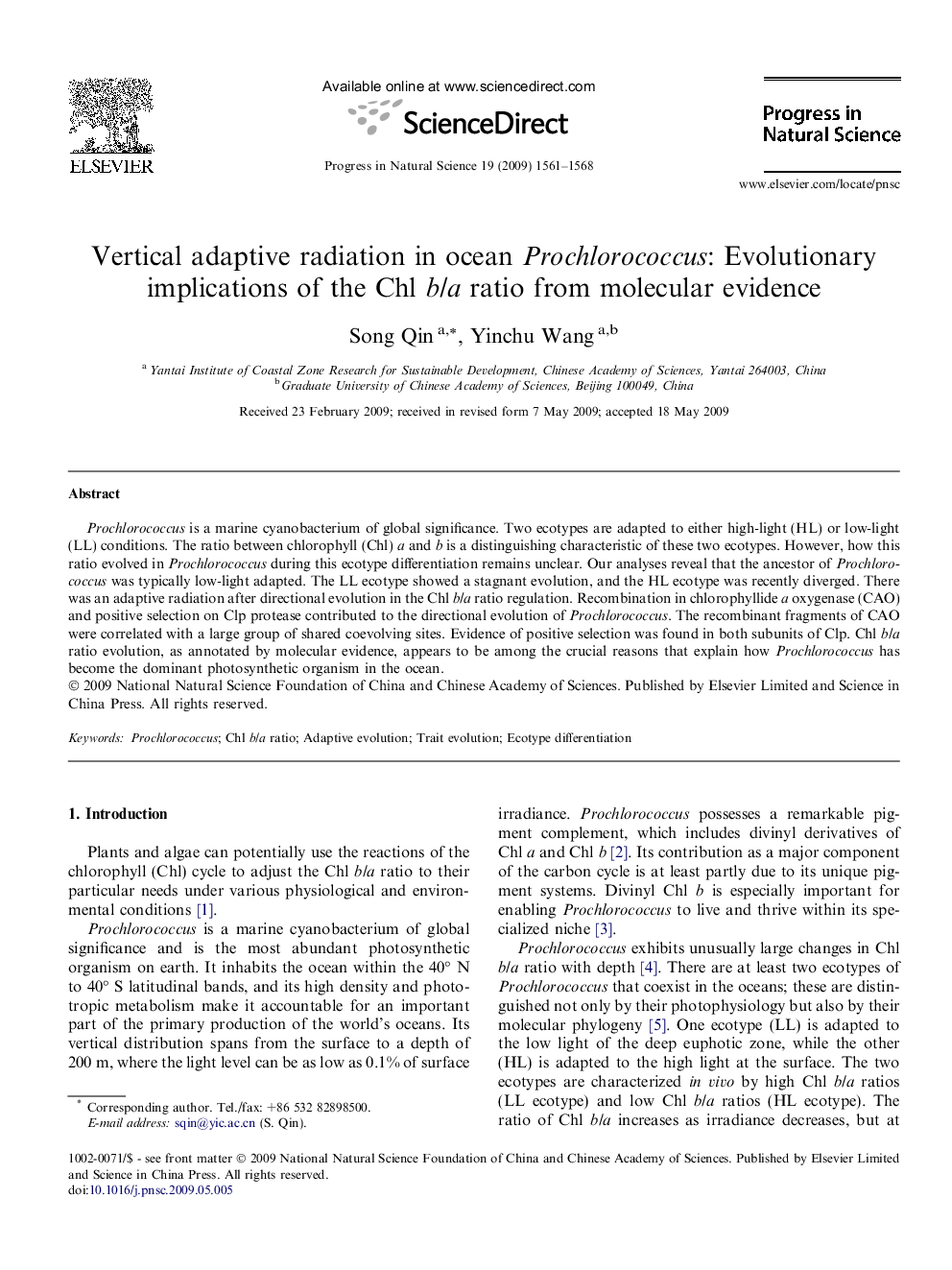| Article ID | Journal | Published Year | Pages | File Type |
|---|---|---|---|---|
| 1548702 | Progress in Natural Science: Materials International | 2009 | 8 Pages |
Prochlorococcus is a marine cyanobacterium of global significance. Two ecotypes are adapted to either high-light (HL) or low-light (LL) conditions. The ratio between chlorophyll (Chl) a and b is a distinguishing characteristic of these two ecotypes. However, how this ratio evolved in Prochlorococcus during this ecotype differentiation remains unclear. Our analyses reveal that the ancestor of Prochlorococcus was typically low-light adapted. The LL ecotype showed a stagnant evolution, and the HL ecotype was recently diverged. There was an adaptive radiation after directional evolution in the Chl b/a ratio regulation. Recombination in chlorophyllide a oxygenase (CAO) and positive selection on Clp protease contributed to the directional evolution of Prochlorococcus. The recombinant fragments of CAO were correlated with a large group of shared coevolving sites. Evidence of positive selection was found in both subunits of Clp. Chl b/a ratio evolution, as annotated by molecular evidence, appears to be among the crucial reasons that explain how Prochlorococcus has become the dominant photosynthetic organism in the ocean.
